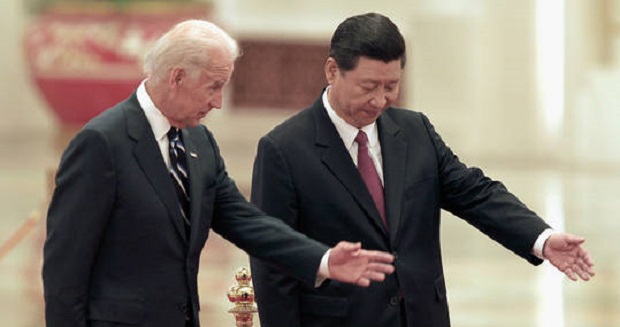‘TOO ADVANCED TO SHOW’ – CHINESE CHEER AS FIRST ‘HORIZONTAL LANDING’ REUSABLE EXPERIMENTAL SPACECRAFT TOUCHES DOWN SUCCESSFULLY – ONCE MATURE, SUCH TECHNOLOGY CAN BE USED FOR ‘SUPER FAST POINT-TO-POINT TRANSPORTATION FOR PEOPLE OR CARGO ON EARTH’ – AS WELL AS SUBORBITAL OR SPACE JOBS / TOURISM
After 276 days in orbit, China’s reusable experimental spacecraft landed at its planned site at the Jiuquan Satellite Launch Center in Northwest China’s Gansu Province on Monday, and Chinese space watchers said it was a milestone in China’s efforts to develop a fully reusable space transportation system.
The success is an important breakthrough in China’s research on reusable spacecraft technologies, which will provide more convenient and affordable round trips for the peaceful use of space, the Xinhua News Agency said on Monday.
China launched a reusable experimental spacecraft using its Long March-2F carrier rocket from the Jiuquan Satellite Launch Center on August 5, 2022, to test reusable technologies and in-orbit service technologies to support the peaceful use of space, Xinhua previously reported.
China tested the reusable experimental spacecraft in September 2020, and the spacecraft returned to the planned landing site after two days in orbit. The spacecraft was also launched with a Long March-2F carrier rocket.
Chinese authorities have disclosed few details about the craft’s technology. So far, no images of the spacecraft or footage of its launch or landing have been disclosed.
Many space lovers compared it to the US Air Force’s X-37B, an autonomous Boeing space plane that can remain in orbit for long periods before returning to Earth on its own, saying that the technology used in the experiment is “too advanced to show” on social media.
The reusable spacecraft’s technology has evidently matured, considering how much longer it can stay in orbit, Chinese space watchers noted on Sunday.
Song Zhongping, a space expert and TV commentator, told the Global Times on Monday that the reusability of such spacecraft would drastically reduce costs. More importantly, the longer orbiting time means that the spacecraft can perform more complicated missions such as changing trajectory in near-Earth orbit and sending various payloads into orbit.
Judging from the rocket used in the launch, the Long March-2F carrier rocket – which is one of China’s most advanced and reliable rockets for manned space flights – the reusable spacecraft may be used in future manned missions, said another space observer, speaking on condition of anonymity.
Given the payload launching capability of the Long March-2F, the spacecraft could weigh around 8 tons, which is very similar to the launch mass for the X-37B at around 5 tons, so that speculation about their similarity is not groundless, the observer said.
The latest test of the reusable spacecraft was the longest, most complicated, and most challenging so far. The record of 276 days in orbit even beat the first mission of the US’ X-37B in 2010, which remained in orbit for 224 days, Huang Zhicheng, a space industry expert, told the Global Times on Monday.
At the China Space Conference opening event to mark the April 24 Space of China this year in Hefei, East China’s Anhui Province, Wang Wei, an academician of the Chinese Academy of Sciences and director of the research and development department of the state-owned aerospace giant China Aerospace Science and Technology Corp, listed the 10 major scientific and technology problems for the 2023 space development.
Among them is the health monitoring of the power system for the reusable vehicle and an assessment of its service life.
Huang said that one of the many advantages of the reusable spacecraft is that it can land horizontally, which is more comfortable and safer for the crew. Once it’s mature, such technology could be applied to suborbital or space tourism, and even super fast point-to-point transportation for people or cargo on Earth.
The US often hypes and smears China’s technology breakthroughs as militarization because it sees all breakthroughs by non-Western countries as a threat. This is meant to maintain a technology monopoly, which is unfair to other countries and serves US hegemony, Chinese experts said.
GLOBAL TIMES
.
